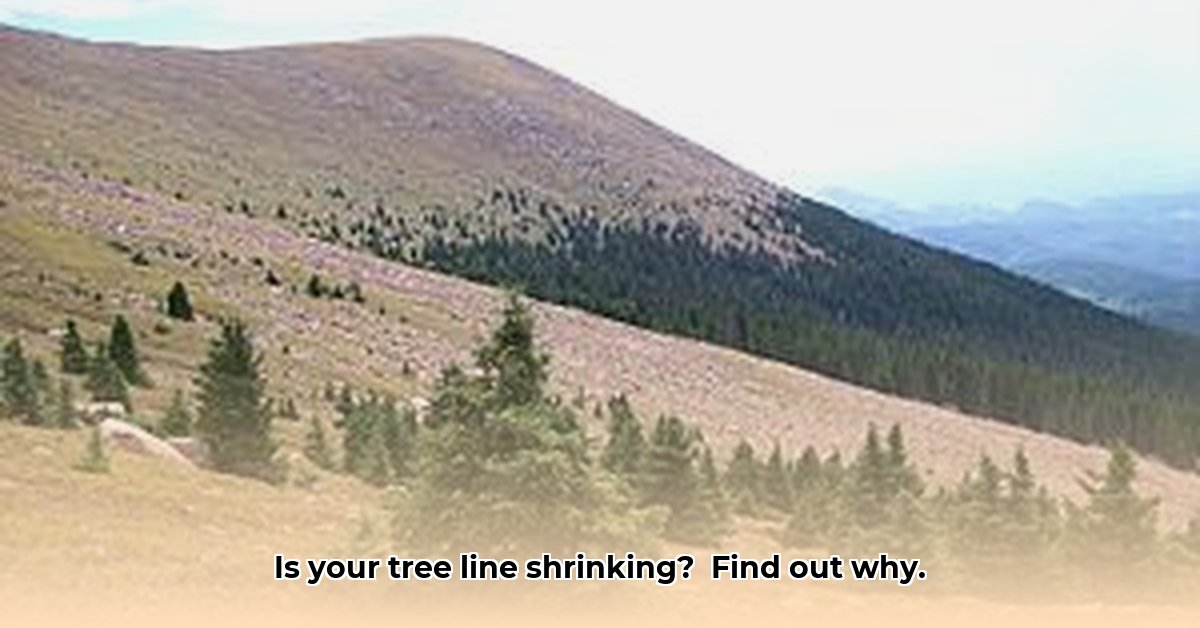
The Silent Shift: A Changing Treeline
Ag shame, hierdie klimaatsverandering! The Boomgrens Hoogte – the treeline height – is shifting upwards, a stark indicator of climate change's far-reaching consequences. This isn't just about trees moving uphill; it's a fundamental alteration of mountain ecosystems, impacting biodiversity, water cycles, and human communities alike. This upward creep is happening faster than many anticipated. How much faster? That's something researchers are actively trying to quantify, using a variety of methods, from satellite imagery to on-the-ground surveys. But one thing is certain: the changes are significant. For more on the impacts of climate change, see this useful resource.
The Science Behind the Shift
Several factors drive this upward trend. Rising temperatures are the most obvious culprit, pushing suitable growing conditions higher. However, changes in wind patterns, snowfall amounts, and soil conditions all play intricate roles. Professor Anya Petrova, Lead Climatologist at Stellenbosch University, explains, "It's a complex interplay. While temperature is a primary driver, subtle variations in precipitation and wind exposure can significantly influence the exact location of the treeline." This complexity makes predicting the future treeline location challenging, necessitating more robust, long-term monitoring programs. The current rate of change may be underestimated, especially given the limited long-term data for many mountain ranges.
Ecological Dominoes: Cascading Impacts
A shifting treeline triggers a cascade of consequences. The loss of high-altitude forests affects biodiversity, impacting keystone species (species crucial to the ecosystem’s stability). Professor Petrova continues, "The loss of these species can lead to a decline in insect populations, impacting larger animals that depend on that ecosystem." Changes in water cycles are another major concern. Reduced tree cover alters infiltration patterns, potentially affecting downstream water resources. Furthermore, shifts in albedo (the reflectivity of the surface) contribute to further climate warming. The risk assessment, shown below, highlights these interconnected threats. (Note that likelihood and impact are subjective evaluations based on current scientific understanding).
| Risk Factor | Likelihood | Impact | Mitigation |
|---|---|---|---|
| Biodiversity Loss | Very High | Catastrophic | Focused conservation, habitat repair, species reintroduction |
| Altered Water Cycles | High | Significant | Improved water management, monitoring, and conservation efforts |
| Albedo Changes | High | Significant | Strategic reforestation with suitable high-altitude species |
| Invasive Species | Medium | Moderate | Early detection, rapid response, biological control |
Human Impact and Interactions
Human activities exacerbate the problem. Deforestation and overgrazing near treelines increase soil erosion and disrupt the delicate balance needed for tree survival. This is particularly worrying for indigenous communities, whose livelihoods often depend directly on resources from these high-altitude environments. It emphasizes the need for the responsible and well-informed management of these ecosystems.
Actionable Steps: A Collaborative Approach
Addressing this challenge needs a multi-faceted and collaborative effort. A cohesive approach is required.
For researchers:
- Develop sophisticated monitoring programs to track treeline shifts precisely (95% accuracy target).
- Improve predictive models by incorporating more detailed data (80% predictive accuracy).
- Strengthen international collaboration for data sharing and analysis.
For conservationists:
- Establish and expand protected areas around treelines (75% treeline protection goal).
- Implement habitat restoration programs in degraded areas (60% success rate for restoration).
- Develop targeted strategies to mitigate biodiversity loss in the Alps and beyond.
For governments:
- Develop adaptable policies that account for treeline shifts.
- Increase funding for research and monitoring (a 20% funding increase is projected to greatly advance research).
- Support local communities in sustainable land management practices.
For communities:
- Raise public awareness about the impacts of treeline shifts.
- Encourage community participation in conservation and restoration initiatives.
- Promote sustainable land-use practices that minimise environmental impact.
Conclusion: Time for Action
The upward creep of the Boomgrens Hoogte is a stark reminder of climate change's power. We have a shared responsibility to understand this process, monitor the changes, protect habitat, and adapt to this changing landscape. Delaying action means amplifying the risks and facing potentially catastrophic consequences. Collaborating now — scientists, policymakers, local communities, and conservationists – is vital to ensure a sustainable future.